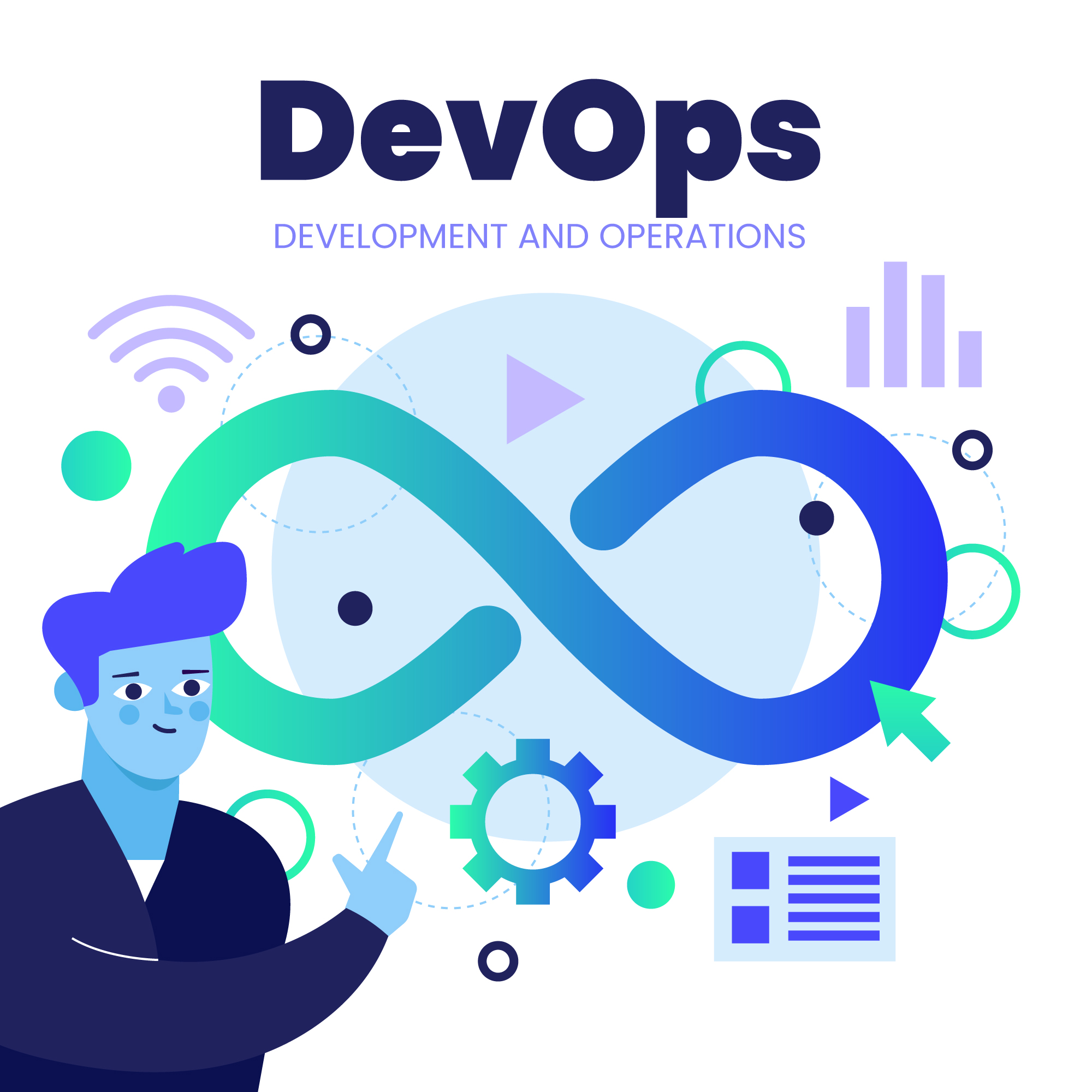In today’s fast-paced tech world, businesses are under constant pressure to deliver software quickly, reliably, and efficiently. This is where the DevOps blend of “Development” and “Operations” comes into play. But it’s not just about automation or continuous integration anymore. Successful DevOps requires strong project management.
Whether you’re a startup launching your first app or an enterprise optimizing workflows, DevOps project management can be the difference between success and costly delays.
This article is curated by Tambena Consulting experts specifically to walk you through the best practices and tools that can help you manage DevOps projects effectively, with a clear and simple approach.
Let’s get started.
Why DevOps Project Management Matters
Traditional project management methods often fall short in modern software delivery. Teams are siloed, updates take too long, and bugs pile up. DevOps breaks down these barriers by encouraging collaboration, automation, and faster feedback.
However, without proper management, even the best DevOps strategies can fail. Here’s why DevOps project management is essential:
- Faster delivery of high-quality software
- Reduced risks through early issue detection
- Improved team collaboration between developers, testers, and IT operations
- Efficient resource usage through automation and real-time tracking
The demand for streamlined, agile project management is higher than ever, and DevOps service offers the tools and mindset needed to keep up.
Understanding the Core of DevOps Project Management
Before diving into best practices, it’s important to understand what DevOps project management involves.
What is DevOps Project Management?
DevOps project management focuses on planning, executing, monitoring, and delivering software in a collaborative, continuous, and automated way. It merges traditional project management principles with modern DevOps culture.
Instead of working in silos, everyone; developers, testers, security teams, and IT works together, sharing responsibility for the product lifecycle.
Key Principles of DevOps Project Management
- Agile mindset: Focus on flexibility, feedback, and frequent releases.
- Continuous integration and delivery (CI/CD): Code changes are automatically tested and deployed.
- Collaboration and communication: Tools and practices encourage transparency across teams.
- Automation: Manual tasks are automated to speed up the process and reduce errors.
- Monitoring and feedback loops: Real-time data helps teams improve continuously.
Best Practices That Drive DevOps Success
Let’s see best practices that you can have with our DevOps consulting services to ensure your projects are well-managed, efficient, and result in successful product delivery.
1. Align Teams with Shared Goals
DevOps is about breaking down silos. Start by making sure all teams have a common vision and understand how their work contributes to the bigger picture.
- Use shared dashboards for visibility.
- Set clear goals and KPIs for every phase of development, testing, deployment, and operations.
2. Adopt Agile Project Management
Agile and DevOps go hand-in-hand. Agile encourages flexibility and quick iterations, which complement DevOps practices.
- Use Scrum or Kanban boards to manage sprints and backlogs.
- Hold daily stand-up meetings to keep everyone aligned.
- Encourage continuous feedback from team members and stakeholders.
3. Automate Wherever Possible
Automation saves time, reduces errors, and keeps everything moving smoothly.
- Automate code testing, integration, and deployment.
- Use tools to automate security scans, performance checks, and infrastructure provisioning.
4. Use Version Control and Branching Strategies
Version control is crucial in DevOps. Use platforms like Git to manage code changes effectively.
- Implement branching strategies like GitFlow or trunk-based development.
- Make pull requests mandatory to ensure code quality and peer reviews.
5. Monitor Everything Continuously
Don’t wait for problems to appear. Monitor your applications and infrastructure in real-time.
- Use tools like Prometheus, Grafana, or New Relic.
- Set up alerts for critical issues.
- Regularly analyze data to improve performance and reduce downtime.
6. Prioritize Communication and Documentation
Even in highly automated environments, people matter. Encourage open communication and maintain good documentation.
- Use collaboration tools like Slack, Microsoft Teams, or Confluence.
- Maintain runbooks and deployment playbooks for consistency.
7. Embrace Continuous Improvement
After every release or sprint, ask: What went well? What didn’t?
- Hold retrospectives to discuss challenges and wins.
- Make small, iterative improvements instead of big changes all at once.
Tools That Make DevOps Project Management Easier
The right tools can make a massive difference. Check out the list of popular and beginner-friendly tools, organized by category.
1. Planning and Collaboration Tools
- Jira: Popular for managing agile projects, tracking bugs, and planning sprints.
- Trello: Simple drag-and-drop boards ideal for small teams.
- Asana: Great for task management and team collaboration.
2. Code Repository and Version Control
- Git (with GitHub, GitLab, or Bitbucket): Essential for version control and collaboration.
- Azure Repos: Ideal for teams already using Microsoft services.
3. CI/CD Tools
- Jenkins: Open-source and highly customizable.
- GitLab CI/CD: Built-in CI/CD with GitLab repositories.
- CircleCI: Fast and developer-friendly.
- Azure DevOps: End-to-end CI/CD pipelines for enterprise teams.
4. Infrastructure as Code (IaC)
- Terraform: Manage cloud resources using configuration files.
- Ansible: A Simple automation tool for configuring systems.
- AWS CloudFormation: Best suited for AWS users.
5. Monitoring and Logging
- Prometheus + Grafana: Monitor metrics and visualize data in real-time.
- ELK Stack (Elasticsearch, Logstash, Kibana): Centralized logging and analysis.
- Datadog: Cloud monitoring, alerts, and analytics.
6. Containerization and Orchestration
- Docker: Package applications into containers for consistency.
- Kubernetes: Automate deployment, scaling, and management of containerized apps.
How to Start Your DevOps Project Right
Now that you understand the key practices and tools, here’s a simple step-by-step action plan to kick off your DevOps project management journey.
Step 1: Define Clear Goals and KPIs
Know what success looks like. Define metrics like:
- Deployment frequency
- Lead time for changes
- Mean time to recovery (MTTR)
- Change failure rate
Step 2: Choose the Right Tools for Your Team
Don’t overload your stack. Start simple:
- Use Git + GitHub for version control
- Add Jira for project tracking
- Start with Jenkins or GitLab CI for automation
Step 3: Build a Collaborative Culture
Foster trust and communication across departments. Ensure developers, testers, and operations are involved from day one.
Step 4: Automate and Monitor
- Automate tests and deployments early.
- Add monitoring tools before going live.
Step 5: Review and Improve Regularly
Use retrospectives to reflect and improve. Encourage feedback at every stage and evolve your processes accordingly.
Success Comes from Simplicity and Consistency
DevOps project management is not about adding complexity but making software delivery simpler, faster, and more reliable through collaboration, automation, and smart tools.
Your team can overcome common hurdles and build high-quality products that satisfy users by following the best practices mentioned here and using the right tools. However, if you still find it hard to navigate, feel free to contact us; our experts will be happy to assist.
Remember, whether you’re just starting or looking to optimize an existing DevOps workflow, always start small, stay consistent, and improve continuously.






